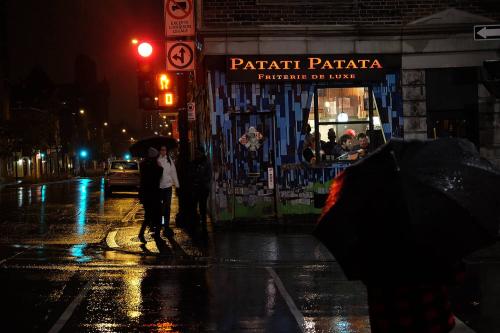A common thread among our observations of art is the inevitable response, “I wish I could do that” (Occasionally, “even I could do that” comes up, but that is a different discussion entirely). The answer invariably is, “You can”. However, the question then becomes, how much time are you willing to devote to your craft in order to be able to do so? Music, painting, writing, and photography are all crafts that need to be practiced in order to improve. Works by the great masters may seem inhuman and nearly divine, but they are done by those that honed their skills to a high level.
Photography, like all other forms of art has common traits, such as composition, but it also has its own traits that make it unique. The technical aspect of photography is deeply ingrained, and inseparable to the art of photography. A photographer must not concern themselves with only color and composition, but also amount of light present, depth of field, grain, etc. These traits manifest as shutter speed, aperture, and ISO settings. When a photographer gains a decent understanding of these settings, they are able to mold their composition the way they wish to see the world (usually).

Ultimately, I have found the most important part to improving your photography is time. Even if a photographer masters these aspects of photography and more (there’s always more), they may create technically perfect images that are completely uninspiring. Cameras, even cellphone cameras, are advanced to the point where they can adjust settings just fine on their own. So it is upon us to put meaning into the photos we take. Learning to put meaning, oomph, or even soul, into our images takes time.
One aspect of time for photography is practice. What does it mean to practice photography? It means getting out and taking photos. Committing to an amount each week is important. Be it 30 minutes per day, 3 hours over the weekend, or even more. Dedicating time to go out and take pictures gives you the opportunity to walk around subjects, study them and try to photograph them in a novel way. While it can be fun to take a classic snapshot of the skyline near you, or of well trod landscapes, or of Washington D.C. monuments from the famous viewpoints, you will likely find it even more satisfying to put your own spin on it.


I like the first picture of the monument just fine, but I feel like the second captures the look of the horse in a way that is more captivating. The previous image of the woman is yet another angle of the George Washington monument. We have great flexibility on choosing our viewpoints, and they can take a photo from mundane to fantastic. Taking the time to find new view points is very helpful.
The next part of taking time is looking over photos after you have taken them. It is important to critically examine them on a bigger screen in their full detail. What about your photos worked? What didn’t work? Add most importantly, why? It’s not important to nail every rule when you are getting started (rules are made to be broken anyways*), but trying to follow rules of thumb, especially in the beginning gives you a big head-start on dynamic photography. It takes time to look over all of your photos, but it is a crucial part of improving your photography.
If you take the time to both take pictures and look them over and continue to do this over time, you’ll find yourself incrementally improving. It’s not a sudden change, but often when you look back at the beginning of your serious efforts, you’ll find that your new work is much better. The first step to better photography is not new gear, or a new technique, but instead practice. It may not be easy or glamorous, but give your photography time to grow, and you will certainly grow with it.
*Learning to follow rules before you break them is important, because once you know the conventions, you can then meaningfully break them. Breaking conventions for little reason other than not wanting to learn them is more often than not confusing to the audience.
Read more:
The Complete Idiot’s Guide to Photography Essentials
I found this guide to be a great introduction to photography concepts, without being condescending (I know, I know, the name). They cover many of the bases of photography and leave well equipped to learn both composition and technique.
The Soul of the Camera: The Photographer’s Place in Picture-Making
David duChemin does a fantastic job in this collection of essays imparting the importance of meaning to your craft. His advice is practical and inspiring.

Comments